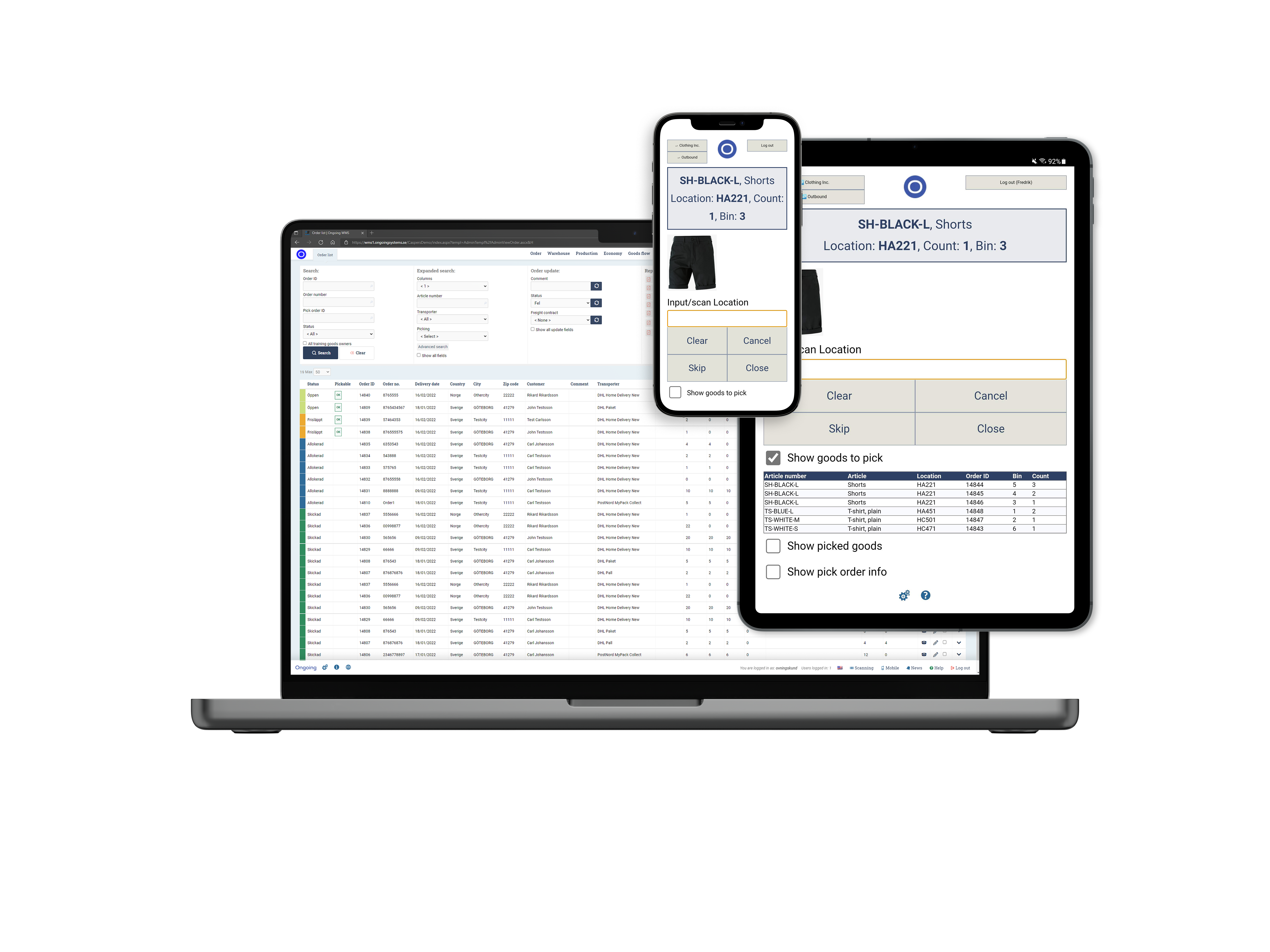WMS Explained
A WMS (Warehouse Management System) is software that streamlines warehousing and logistics. It shows what items are in stock, their quantities, and locations, while also managing orders for picking, packing, and shipping. Warehouse staff can easily see what to pick, when, and where to send it. A WMS often integrates with ecommerce platforms, ERP systems, and transport solutions to automate processes. Overall, it improves traceability, reduces errors, and increases efficiency.

Who Needs a WMS?
A Warehouse Management System is most valuable for businesses with logistics-intensive operations. For third-party logistics providers (3PL), who manage warehousing, order picking, and shipping on behalf of their customers, the WMS plays a business-critical role. E-commerce companies and other businesses with high order volumes also depend on a WMS to maintain operational efficiency. While smaller businesses may be able to handle their warehouses manually in the beginning, growing complexity and larger inventories quickly make a WMS a game-changer.
What Types of WMSs are There?
The choice of WMS often depends on the size and complexity of the warehouse. Very small companies may manage stock balances with tools like Excel, while smaller warehouses often rely on the ERP system’s built-in WMS module, which usually covers only the most basic functions. Dedicated WMS providers, by contrast, offer systems with considerably more functionality, and most modern solutions are cloud-based, which makes them accessible from anywhere via a web browser.
Another important consideration is whether a business should use a standard solution or invest in a customized one. A standard WMS provides ready-to-use functionality that is sufficient for most companies and quick to implement without requiring a large upfront investment. A customized WMS, on the other hand, can be tailored to specific business needs but usually requires more time and resources, since the customer must fund the development of unique features. For many companies, a standardized cloud-based WMS offers the most practical and cost-effective solution.
What Should You Expect From a Full-Scale WMS?
A full-scale WMS today is typically delivered as Software as a Service (SaaS). Instead of requiring heavy investment at the start, customers pay a monthly subscription fee, making the system affordable and easy to adopt.
The features that matter most depend on the type of warehouse business. For a 3PL, it is crucial to be able to manage multiple goods owners in one system, while an e-commerce company may place greater emphasis on speed and accuracy in the picking process. Barcode scanning is a common function that helps ensure efficiency and accuracy and is usually supported by modern WMSs.
It is also important that the WMS has a well-developed API, which allows it to communicate smoothly with other systems. A strong API makes integrations fast and straightforward, while a poor one leads to unnecessary time, effort, and costs.
What Does It Mean to Use an Integrated WMS?
One of the most important aspects of a modern WMS is its ability to integrate with other business-critical systems. These include e-commerce platforms, ERP systems, transport systems, and warehouse automation solutions such as robotic storage, conveyor belts, and lifts. Well-integrated systems create a seamless flow of information that eliminates manual work and reduces the risk of errors.
A good way to identify the right WMS is to check the websites of your existing software providers—such as your ERP or e-commerce platform—to see which WMS solutions they already support.
Summary
A Warehouse Management System increases traceability, minimizes errors, and makes warehouse operations more efficient. The most important characteristics of a modern WMS are that it is web-based, delivered as SaaS, and equipped with modern APIs and broad integration capabilities.
Explore Ongoing WMS to learn how it can transform your warehouse operations.

